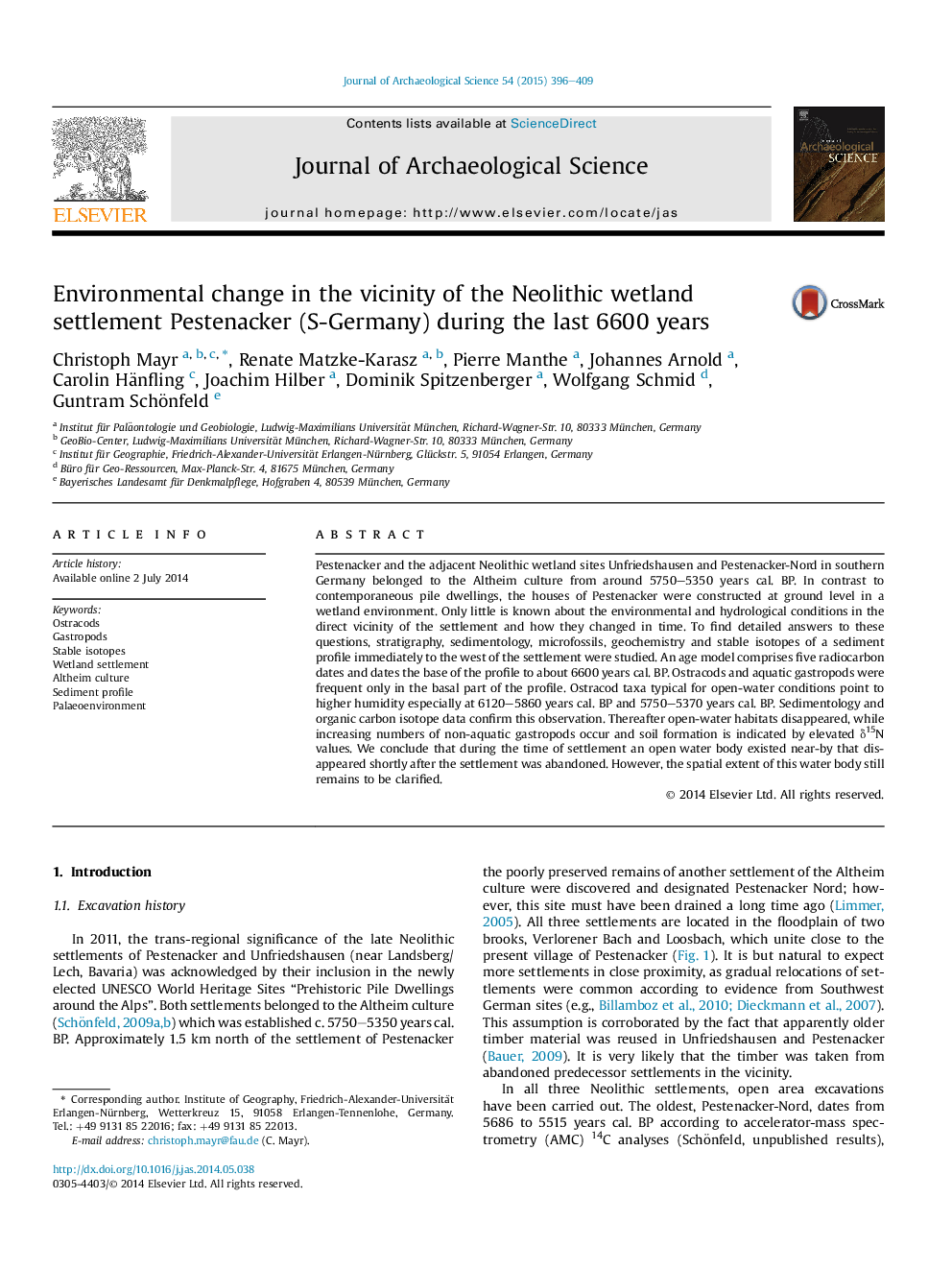| Article ID | Journal | Published Year | Pages | File Type |
|---|---|---|---|---|
| 7442487 | Journal of Archaeological Science | 2015 | 14 Pages |
Abstract
Pestenacker and the adjacent Neolithic wetland sites Unfriedshausen and Pestenacker-Nord in southern Germany belonged to the Altheim culture from around 5750-5350 years cal. BP. In contrast to contemporaneous pile dwellings, the houses of Pestenacker were constructed at ground level in a wetland environment. Only little is known about the environmental and hydrological conditions in the direct vicinity of the settlement and how they changed in time. To find detailed answers to these questions, stratigraphy, sedimentology, microfossils, geochemistry and stable isotopes of a sediment profile immediately to the west of the settlement were studied. An age model comprises five radiocarbon dates and dates the base of the profile to about 6600 years cal. BP. Ostracods and aquatic gastropods were frequent only in the basal part of the profile. Ostracod taxa typical for open-water conditions point to higher humidity especially at 6120-5860 years cal. BP and 5750-5370 years cal. BP. Sedimentology and organic carbon isotope data confirm this observation. Thereafter open-water habitats disappeared, while increasing numbers of non-aquatic gastropods occur and soil formation is indicated by elevated δ15N values. We conclude that during the time of settlement an open water body existed near-by that disappeared shortly after the settlement was abandoned. However, the spatial extent of this water body still remains to be clarified.
Related Topics
Physical Sciences and Engineering
Materials Science
Materials Science (General)
Authors
Christoph Mayr, Renate Matzke-Karasz, Pierre Manthe, Johannes Arnold, Carolin Hänfling, Joachim Hilber, Dominik Spitzenberger, Wolfgang Schmid, Guntram Schönfeld,
